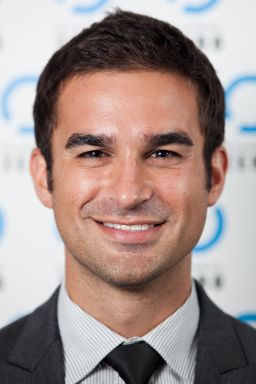Editor’s Note: Derek Johnson is the executive director of Global Zero, an international movement seeking a world without nuclear weapons. The opinions expressed in this commentary are his.
Twelve months into the Trump era, the outlook for the planet has gone from bad to worse. As the Bulletin of Atomic Scientists sets its Doomsday Clock ahead 30 seconds – to two minutes before midnight – the lesson seems clear: our time is nearly up.

It is tempting to argue the increasingly long odds of humanity’s survival correspond to the rise of an erratic celebrity apprentice to the White House. The enormous destructive capability at his fingertips – coupled with his ignorance of international affairs and disdain for diplomacy, his fetish for violence and dehumanizing worldviews, and his consistently ballistic tendencies – has us balanced on the razor’s edge. Rightly so.
But in truth, this problem is bigger than any one president. Even Donald Trump.
While many factors contribute to the setting of the Clock, it is the terrible prospect of nuclear conflict that lies at the heart of today’s announcement. There are still more than 15,000 nuclear weapons in the world. Beyond all reason, the United States and Russia keep thousands of them on hair-trigger alert, ready to launch at any moment. Bear in mind that a single modern warhead has more destructive force than all of the bombs detonated in World War II combined, including the atomic weapons dropped on Japan.
Confronted for the first time with multiple geopolitical hotspots that could go nuclear with little or no warning, the world is in dangerous and uncharted waters.
This parade of nuclear-tinged crises has steadily worsened over the last year: North Korea and the United States appear to be on a collision course, fueled by schoolyard taunts, missile tests and threats of “fire and fury.” NATO-Russia tensions are intensifying and are spilling over into the arms control arena, threatening to unravel vital agreements like the Intermediate-Range Nuclear Forces Treaty and New START. Nuclear arms-racing India and Pakistan are once again clashing in Kashmir, with casualties mounting on both sides. And another nuclear crisis may be brewing in the Middle East as the White House actively works to undermine the Iran deal.
Meanwhile, as you read this, all of the nuclear-armed states are marching to upgrade, expand or operationalize their arsenals. Rather than continuing decades of slow but steady progress to eradicate them, nations are sinking trillions of dollars globally into building a whole new generation of civilization-ending weaponry. “Nuclear buttons” sit on the desks of more authoritarian men than at any moment in history.
As this march continues, the role of nuclear weapons will be further cemented in national security policies and inoculated against stigmatization. And the risks that they will be used – by accident, by unauthorized action, by mistaken launch on false warning, by deliberate decisions stemming from crisis escalation, or in a fit of pique – will rise.
These are not the hysterical musings of armchair analysts and activists. The draft of Trump’s radical new Nuclear Posture Review leaked this month confirms just how far and how fast the United States is backsliding toward nuclear warfighting. Without urgent intervention, it only gets worse from here.
We have spent decades in comfortable and dangerous denial of the inherent risks of nuclear weapons and the fault lines buried in “red button” systems geared for first strike and quick launch. Now, thanks to Trump, it is impossible to ignore – and not a moment too soon.
Confronting these dangers will require the relentless work of many years – more time than we likely have if nothing changes soon. We can buy ourselves some breathing room with any number of emergency measures currently circulating in Congress, like the Restricting First Use of Nuclear Weapons Act; by starving Trump’s nuclear ambitions of the eye-popping funds they require; and by demanding diplomatic engagement with nuclear-armed adversaries, first and foremost the North Koreans.
But there are only two ways this story ends: We either find the wisdom and courage to reduce and ultimately eliminate these weapons, or the Clock strikes midnight.
We are running out of time to decide which future we will live to see.


